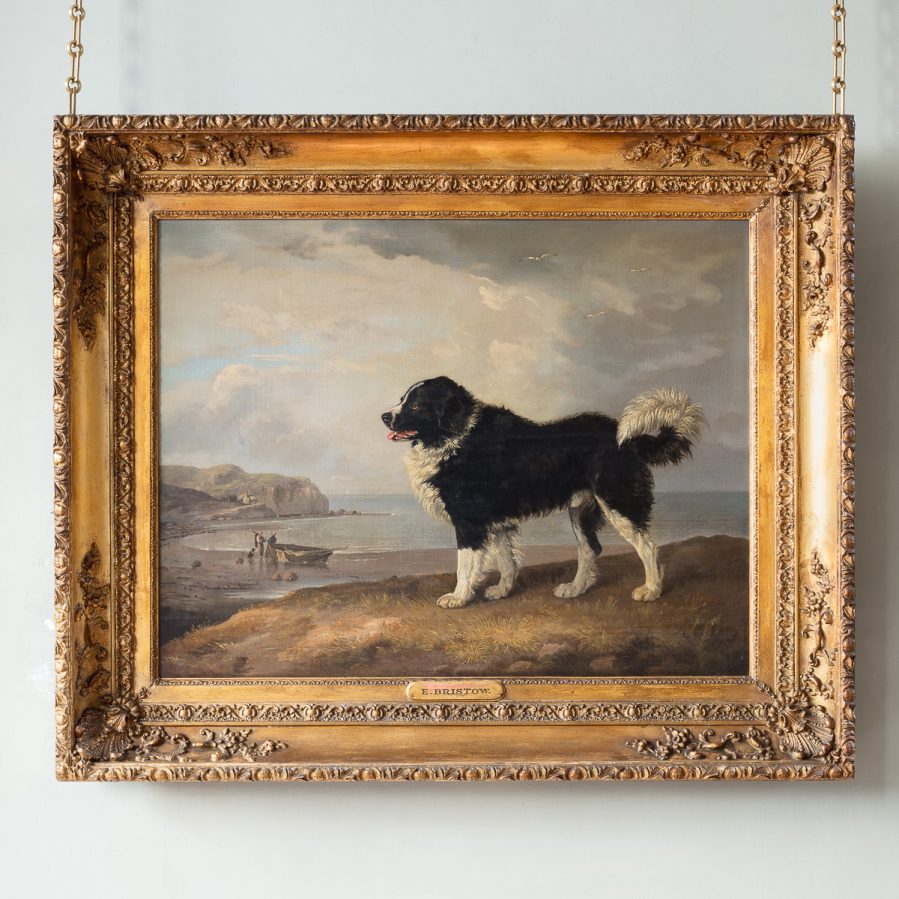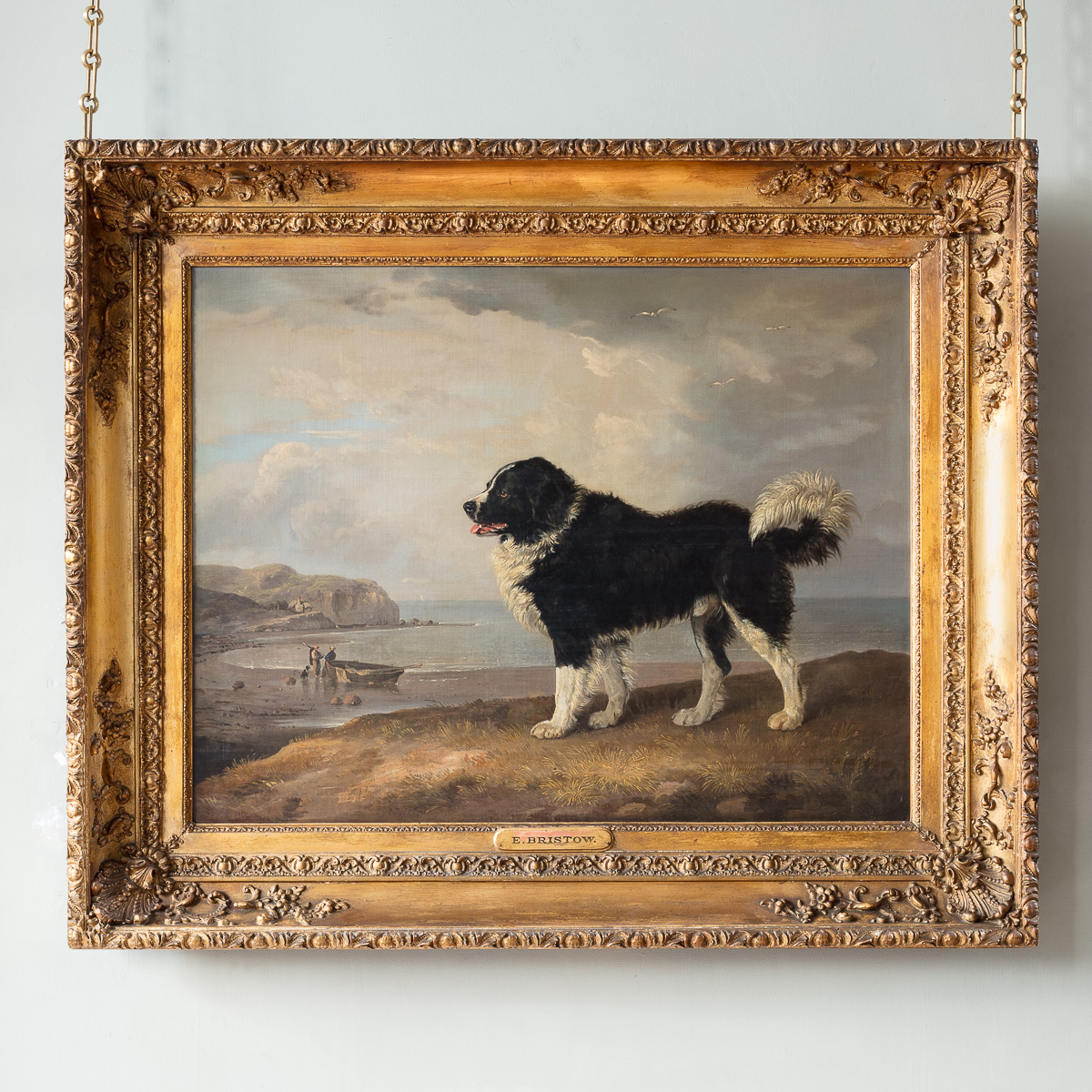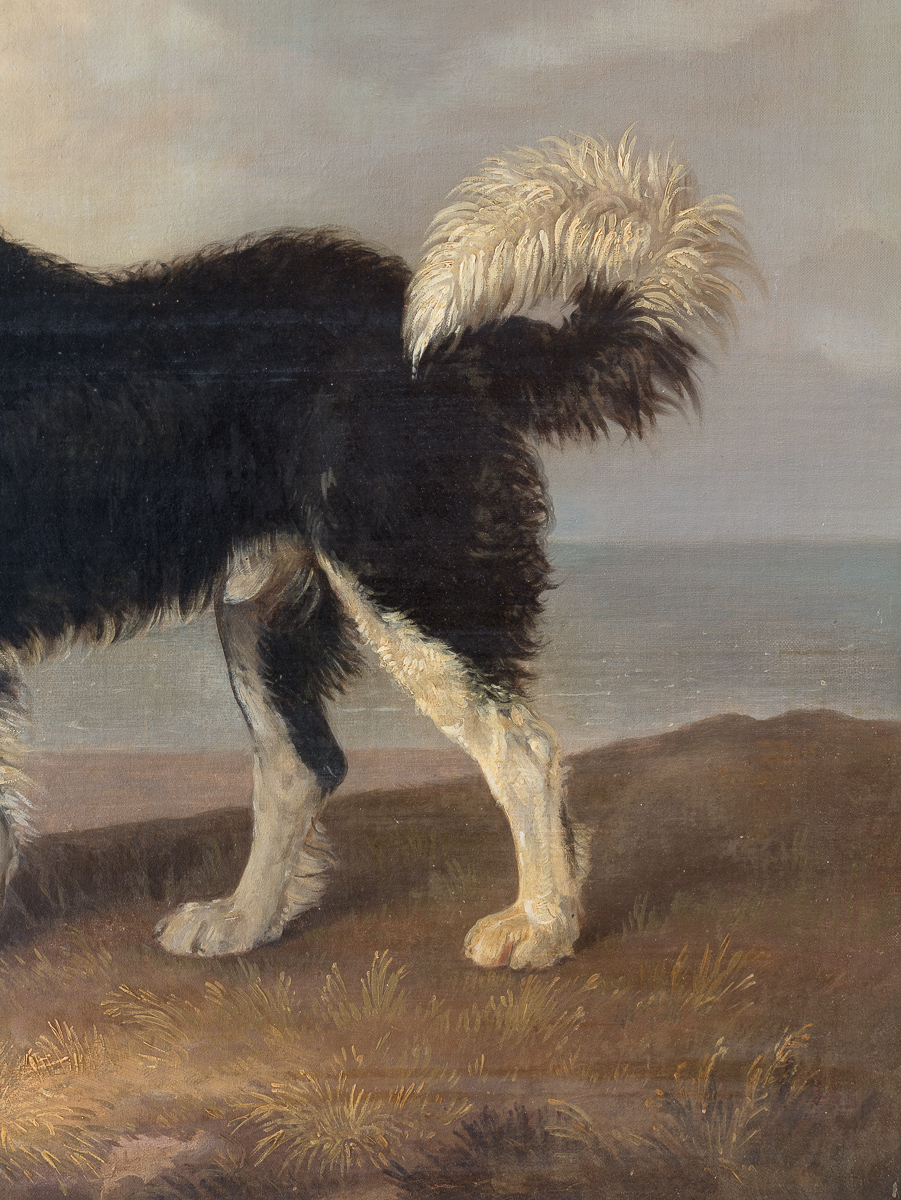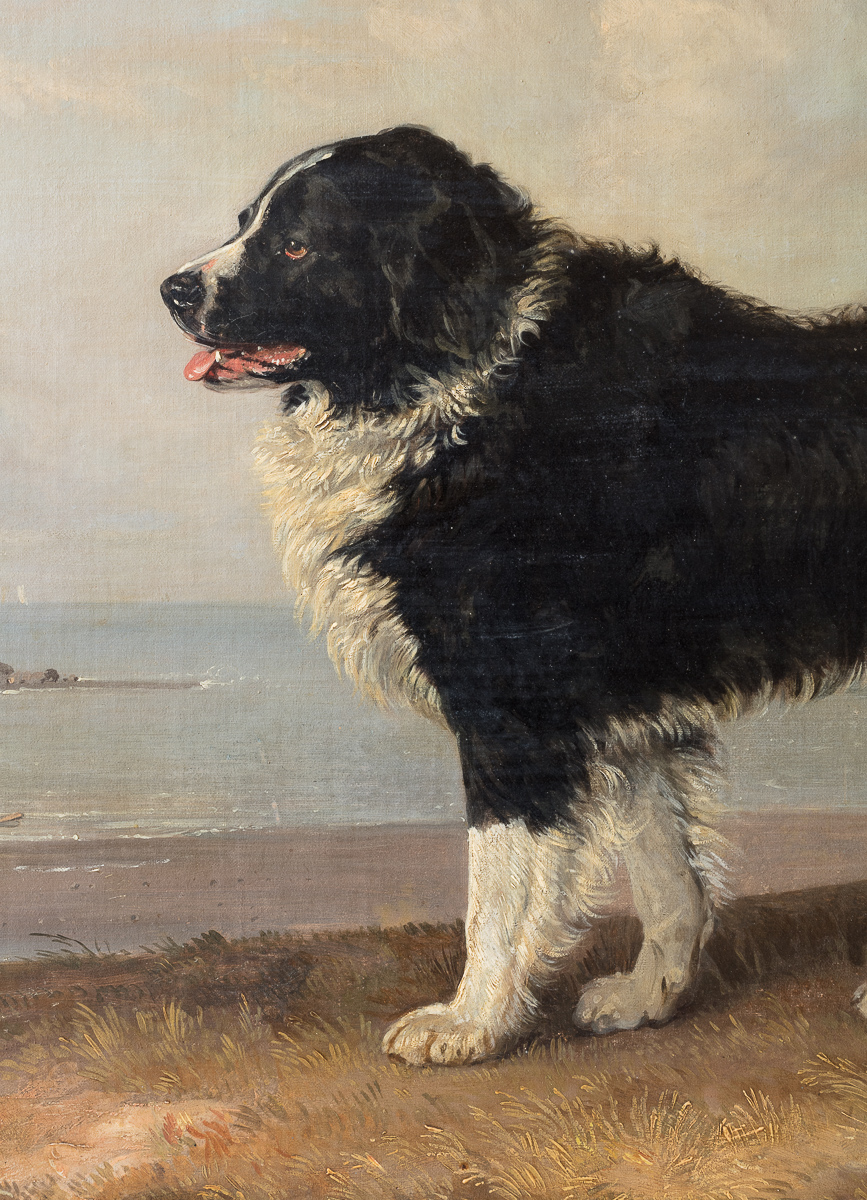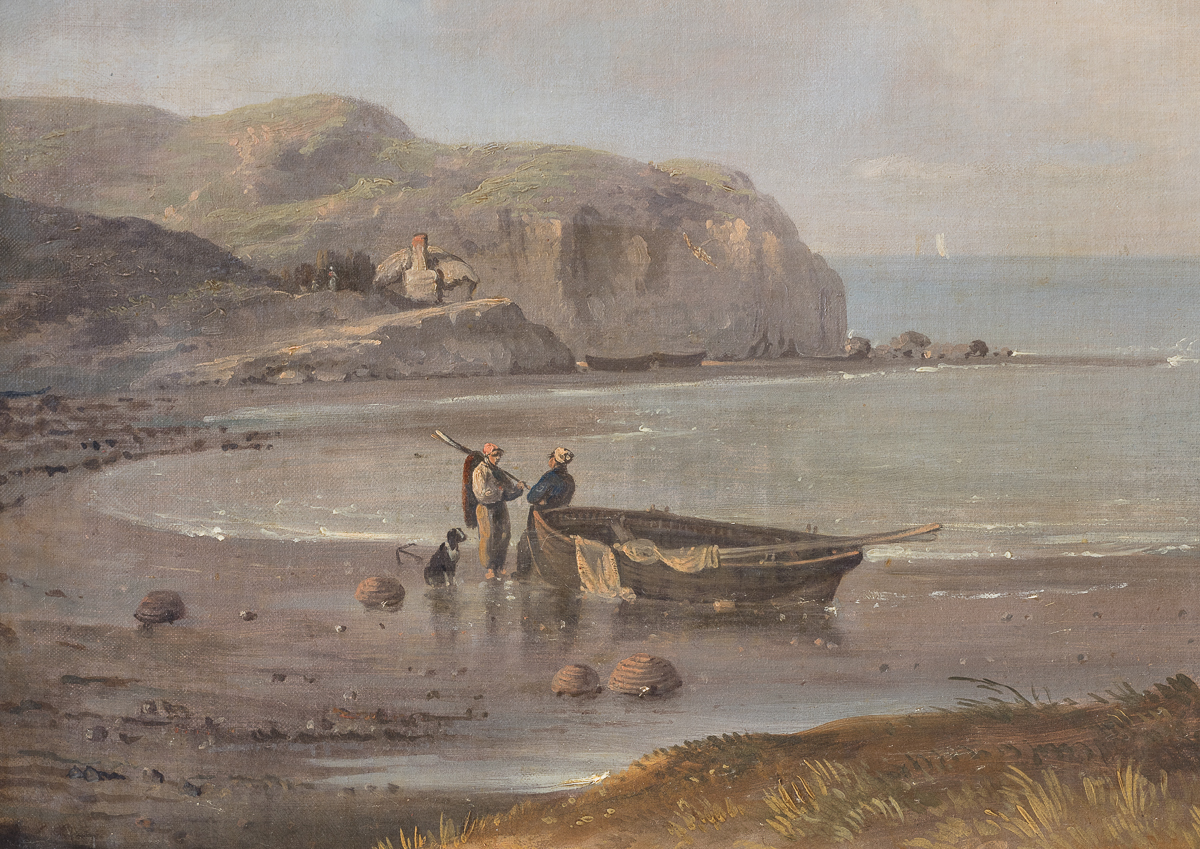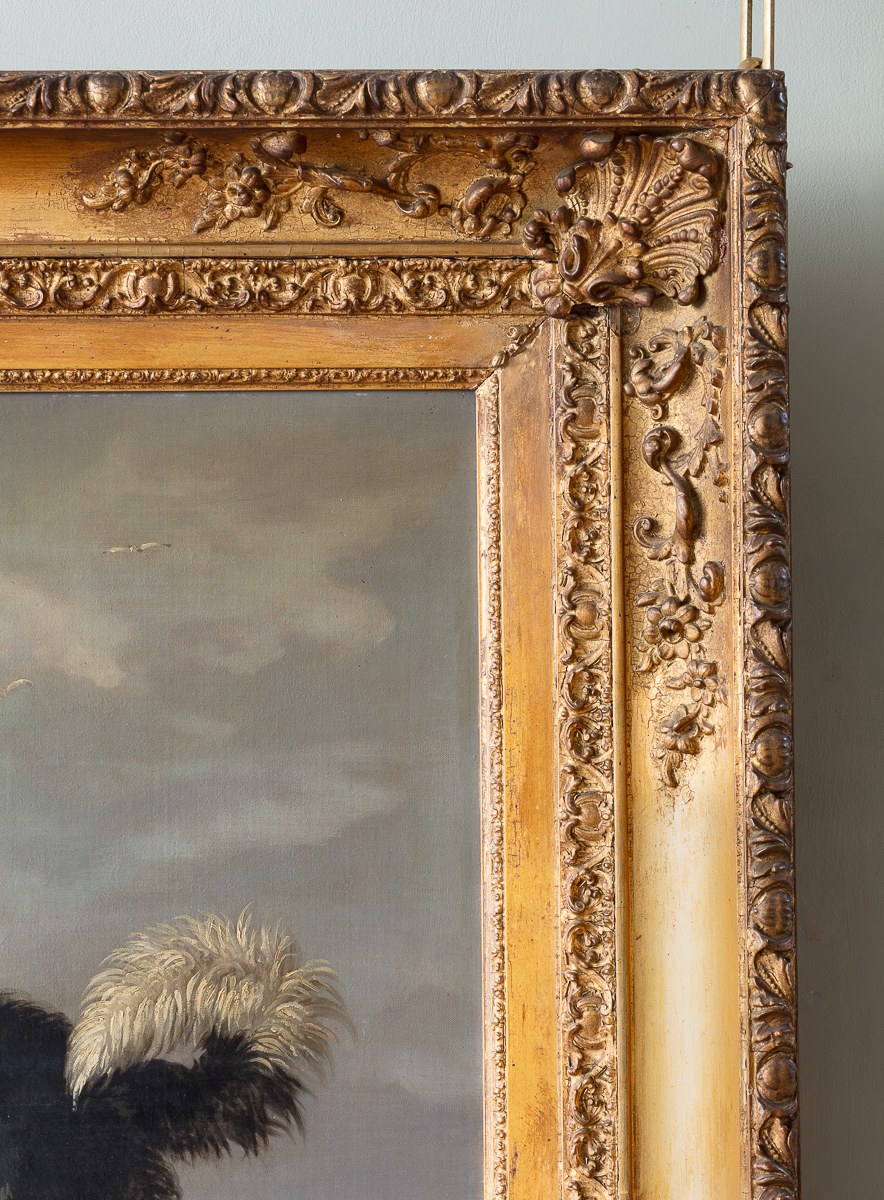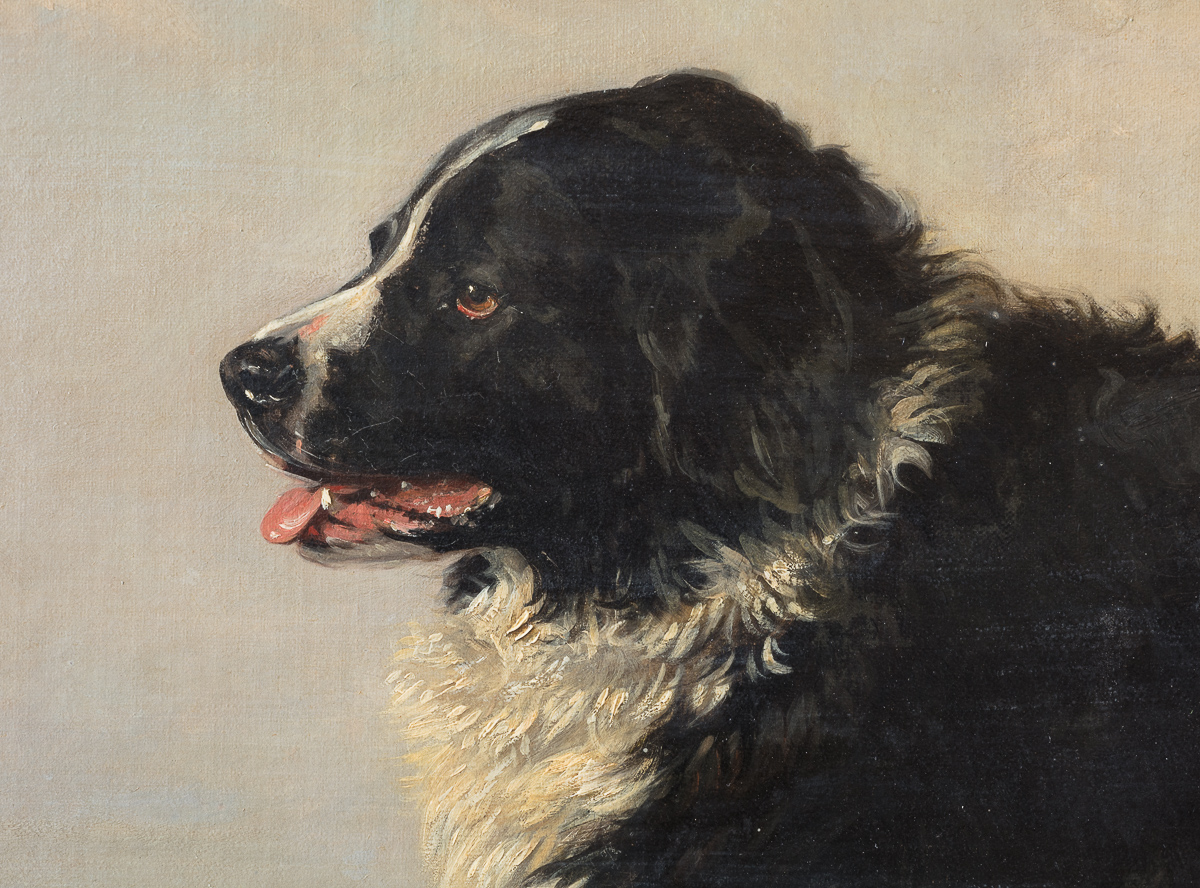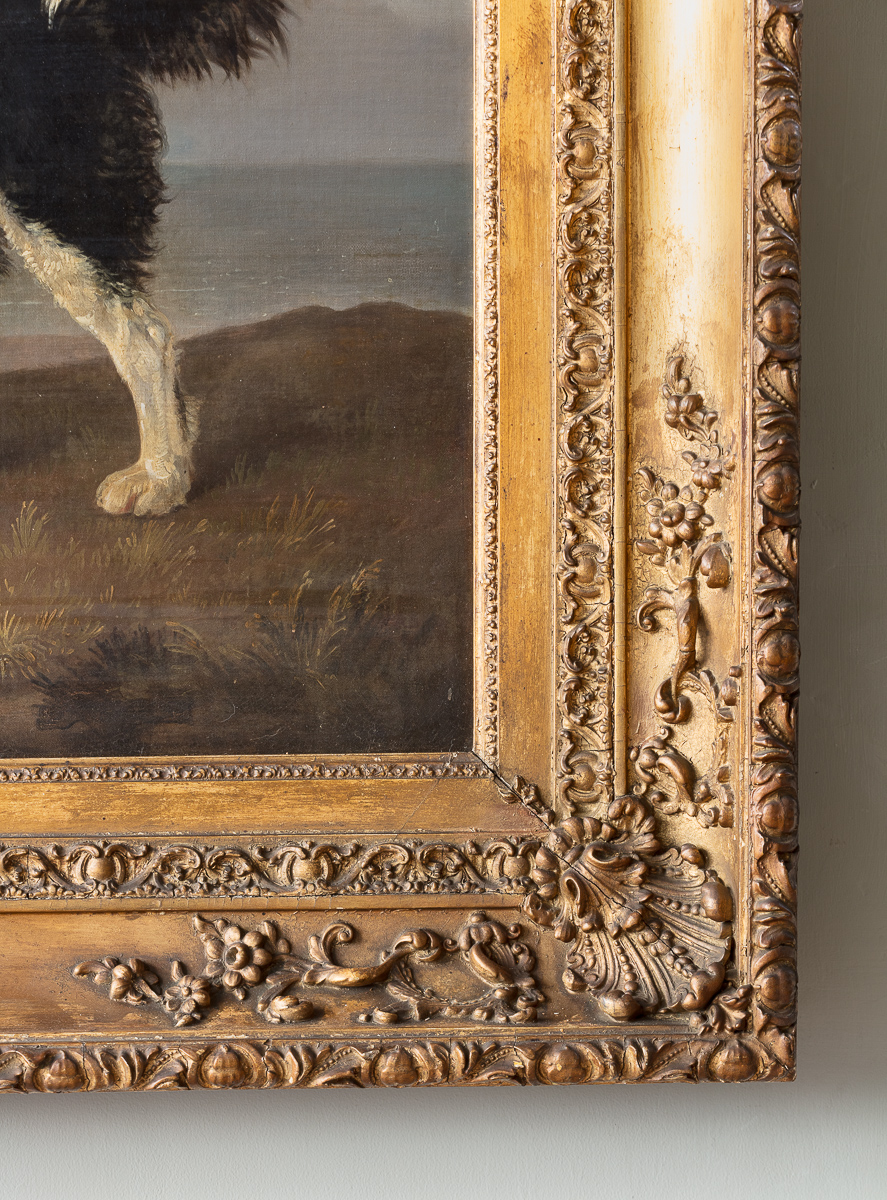Oil on Canvas; A Newfoundland off the English Coast by Edmund Bristow (British, 1787-1876)
The son of a heraldic painter, Edmund Bristow was born in Berkshire in 1787 ( (1 Apr 1787 – 12 Feb 1876), and lived all his life locally in Eton, after having attended school in nearby Windsor. He did not receive a formal artistic education, but his paintings of animals, interiors and rural scenes show considerable technical proficiency, combined with a vivid palette and a narrative flair reminiscent of George Morland (1763-1804), one of the most prominent interpreters of the English School of genre painting. From an early age, Bristow encountered the favour of prominent patrons, including the Duke of Clarence, afterwards King William IV, and Princess Elizabeth, later Landgravine of Hesse-Homburg. Today, the Royal Collection owns a significant number of works by Bristow, who is also well-represented in the holdings of the National Trust (Anglesey Abbey, Cambridgeshire) and museums such as the Yale Center for British Art in New Haven.
A contemporary of Sir Edwin Landseer (1802-1873), who is said to have welcomed advice from him, Bristow was a skilled animal painter, who rejected public fame – exhibiting only a handful of pictures at the Royal Academy and other London institutions throughout his long career – but enjoyed the patronage of the British Royal family and left a compelling corpus of portraits of domestic and farm animals, exemplified by this beautifully observed representation of a Newfoundland.
Throughout the eighteenth century and into the nineteenth century, stories of the Newfoundland breed’s bravery had become well-documented, and it is this theme that often provides the context for their portrayal in paintings. In the present work, Bristow alludes to the dog’s role as both a companion to fishermen and coastal rescue dog, standing proudly with the sweeping southern English coastline in the background. While the location cannot be identified with certainty, the white rocks plunging into the sea echo the White Cliffs of Dover in Kent, a landmark that would have immediately resonated with viewers.
Notably, in 1844 Queen Victoria acquired a portrait of a dog by Bristow – likely a Great Pyrenees, high up on a rocky outcrop and surveying the seashore where two figures stand next to a boat – that bears an almost identical composition to the present canvas, suggesting this type of image had attracted the admiration of a most distinguished patron (Royal Collection Trust, fig. 1). Dated 1817, the canvas also offers a point of reference for the possible execution of the present painting. On the subject of patronage, it is interesting to note that Bristow is said to have been an eccentric character, who did not work to order and occasionally even refused to sell finished pictures to prospective buyers. He appears to have been extremely private, and did not seek the company of London society, yet, writing in 1900, historian Sir Walter Gilbey observed that his pictures “were appreciated and sought for by those residing in the immediate locality of his studio, and private collections in Windsor and Eton contain many excellent examples from his brush.”
Signed ‘E. Bristow’ (lower left)
Reference Bibliography
W. Gilbey, Animal painters of England from the year 1650: a brief history of their lives and works, London, 1900, vol. I, pp. 75-80
W. Hepworth, revised by S. Sowerby, “Bristow, Edmund” in Oxford Dictionary of National Biography online, 2004 and revised 2024 https://doi.org/10.1093/ref:odnb/3450
Height: 102cm, 40 1/4″
Width: 121cm, 48 3/4″
£58,000


